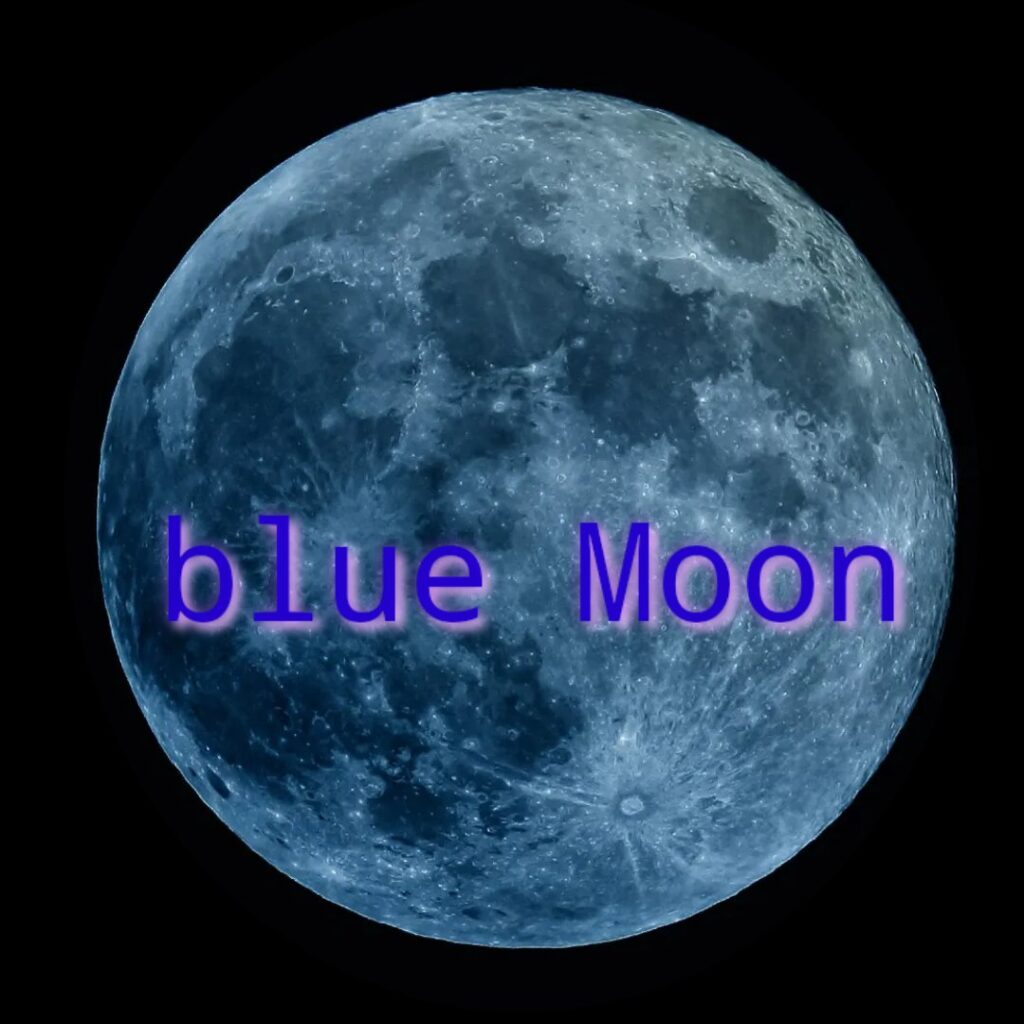
“ब्लू मून घटना: रहस्य और मिथक”
“Blue Moon Magic: A Rare Celestial Spectacle”
“Chasing the Blue Moon: A Guide to Rare Lunar Events”
“Once in a Blue Moon: Unveiling the Enigma”
“ब्लू मून ब्यूटी: कैप्चरिंग द एक्स्ट्राऑर्डिनरी”
“Blue Moon Lore: Myths, Legends, and Facts”
“Blue Moon Illumination: A Cosmic Gift to Earth”
“Beyond the Blue Moon: Exploring Our Celestial Neighbor”
- “Blue Moon Wonders: The Science and Stories”
“Setting Intentions by the Blue Moon: A Spiritual Journey”
The Blue Moon Beauty
The Mystique of the Blue Moon: Unveiling the Enigma
The night sky has always held a special fascination for humanity. Its celestial wonders, from stars to planets, have sparked curiosity, storytelling, and even rituals across cultures. One such celestial phenomenon that has piqued our interest for centuries is the Blue Moon.
What is a Blue Moon?
A Blue Moon is not actually blue in color; it’s a term used to describe the second full moon within a calendar month. The lunar cycle is roughly 29.5 days long, so most months have only one full moon. However, occasionally, a second full moon occurs within a single month, leading to the rare occurrence of a Blue Moon. This event, shrouded in myth and folklore, has given rise to the belief that it holds special significance.
The History and Lore
The term “Blue Moon” dates back centuries and has been featured in folklore, literature, and songs. Its origins are somewhat convoluted, but it gained prominence in the 20th century, largely due to a misinterpretation of the term in the Maine Farmers’ Almanac in 1937.
Blue Moons in Popular Culture
The allure of Blue Moons extends beyond astronomy; they have made their way into popular culture. Songs like “Blue Moon” by Elvis Presley and the famous phrase “once in a blue moon” are examples of how this celestial event has permeated our everyday language.
The Science Behind the Phenomenon
While the term “Blue Moon” has captured our imagination, there is no scientific basis for it having any unusual effects on Earth or its inhabitants. The color of the moon remains the same during a Blue Moon, appearing as a beautiful, silvery orb, just like any other full moon.
When Will the Next Blue Moon Occur?
To satisfy your curiosity and potentially witness this celestial rarity, it’s crucial to keep track of lunar calendars or use modern technology to predict Blue Moon occurrences. These dates are valuable for stargazers, photographers, and those who simply appreciate the beauty of the night sky.
In conclusion, the Blue Moon, though not truly blue, continues to be a captivating and enchanting part of our cultural and astronomical history. While it may not have any mystical effects, its presence in our lives serves as a reminder of the mysterious and wondrous universe beyond our planet. So, the next time you gaze up at a full moon, remember that occasionally, it might be a “Blue Moon,” a cosmic gift that connects us to the ever-fascinating world of astronomy.
The Blue Moon’s Unique Beauty
One of the most enchanting aspects of a Blue Moon is its beauty. When a full moon graces the night sky for the second time in a month, it offers a picturesque spectacle. Whether you’re an avid astrophotographer or simply enjoy the serene ambiance of a moonlit night, a Blue Moon provides an ideal opportunity to capture its radiance and tranquility.
A Moment of Reflection and Connection
Beyond the scientific and cultural aspects, a Blue Moon also serves as a reminder of our connection to the cosmos. It offers us a chance to pause, reflect, and appreciate the vastness of the universe and our place within it. The moon has been a source of inspiration for poets, artists, and dreamers for centuries, and a Blue Moon amplifies that inspiration.
A Time to Set Intentions
In some spiritual and New Age circles, Blue Moons are seen as a powerful time for setting intentions and manifesting goals. While this perspective isn’t rooted in scientific evidence, it can serve as a meaningful ritual for those who find value in such practices. Whether you meditate under the moonlight or simply take a moment to set personal intentions, the Blue Moon can provide a unique backdrop for self-reflection and goal-setting.
Where and When to Witness a Blue Moon
To experience the magic of a Blue Moon, it’s essential to know when and where it will occur. Blue Moons are relatively rare events, typically happening every 2 to 3 years. Consulting a lunar calendar or using astronomy apps can help you pinpoint the exact date and time of the next Blue Moon in your region. Remember to find a dark, clear spot away from city lights for the best viewing experience.
निष्कर्षतः, हालांकि ब्लू मून में अलौकिक गुण नहीं हो सकते हैं, हमारे रात के आकाश में इसकी उपस्थिति हमें मोहित और प्रेरित करती रहती है। यह ब्रह्मांड के आश्चर्य, हमारी प्राकृतिक दुनिया की सुंदरता और चंद्रमा के शाश्वत आकर्षण की याद दिलाता है। इसलिए, चाहे आप एक अनुभवी तारादर्शक हों या बस खगोलीय आश्चर्य के क्षण की तलाश में हों, अगले ब्लू मून पर नज़र रखें और इसकी चमक आपको प्रेरित करे और आपको ब्रह्मांड से जोड़े।
“The Blue Moon Phenomenon: Mysteries and Myths”
“Blue Moon Magic: A Rare Celestial Spectacle”
“Chasing the Blue Moon: A Guide to Rare Lunar Events”
“Once in a Blue Moon: Unveiling the Enigma”
“Blue Moon Beauty: Capturing the Extraordinary”
“Blue Moon Lore: Myths, Legends, and Facts”
“Blue Moon Illumination: A Cosmic Gift to Earth”
“Beyond the Blue Moon: Exploring Our Celestial Neighbor”
“Blue Moon Wonders: The Science and Stories”
“Setting Intentions by the Blue Moon: A Spiritual Journey”
Blue Moon Beauty: Capturing the Extraordinary Neighbor | Blue Moon Wonders: The Science and Stories
